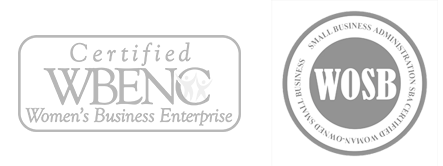WITH SO MUCH DIGITAL MEDIA and advertising noise cluttering the marketplace, getting noticed by prospective customers has become increasingly difficult. It all boils down to two choices: you can design a wildly creative and compelling campaign, or you can rely on the sheer volume of your messaging. However, creativity and messaging volume both come at a steep cost, so supplementing your advertising with public relations is a good way to stretch a limited advertising budget and generate an overall stronger return on your marketing investment. PR, or public relations, provides an organization with exposure to prospective consumers, featuring topics of public interest covered by reporters or bloggers. Consumers think this kind of third-party endorsement is more credible than a traditional advertisement. In fact, many experts estimate PR carries three times more credibility than an ad in the eyes of consumers. If managed properly, PR can be a powerful marketing strategy. PR is most often used as a supplemental strategy to advertising, but it’s not a complete replacement. Why? You can control the message, look and feel of your advertisements, helping your consumers gain familiarity with your brand due to that consistent brand and messaging. Plus, a well researched and planned schedule will ensure you reach the right number of targeted consumers with enough frequency to help drive them to make a purchasing decision. PR comes in many forms but is always less controllable. Someone on your staff might write bylined articles or media commentary, leaders might give media interviews, and even public speaking engagements can count as PR. When developing your PR strategy, it’s vital to begin with an assessment of your firm’s assets, starting with your CEO. Does your CEO inspire others with his industry knowledge? If so, your CEO could write a recurring column for a trade magazine, newspaper or even start blogging. Does your CEO shine in front of an audience, captivating them with stories? If so, your CEO might be cut out for public speaking or TV interviews. If your CEO shies away from the limelight, you might propose phone interviews with print reporters at the local newspaper. Play to your strengths. Once you have a strategy in place, next you’ll want to establish relationships with reporters and editors who influence the PR channels you’re targeting. However, reporters like to know you’ve done your homework. You need to know what industries they cover, the types of stories they gravitate toward, and their writing style. They want to see that you are thoughtfully pitching them specifically, not just including them on a mass distribution of a press release. When you have developed a relationship with a member of the media, make sure the communication goes both ways. Don’t always reach out with a need. Support these reporters by making community connections for them when they’re trying to land an interview. Send story leads that don’t directly benefit your company. If your media connections see you as a responsive resource, they are more apt to be open to your story ideas.
Recent Posts
- Hire, Fire, and Reward Based on Outcomes: The Only Way to Build a Growth Team
- Why Weekly Optimization Separates Winners from Losers
- The Domino Effect: What Happens When You Reposition Your Brand
- Why Leaders Must Demand Accountability for MROI Projections
- The Beautiful Bias That’s Sabotaging Your Customer Insights
Related Posts
 Marketing Strategy
Marketing Strategy
Hire, Fire, and Reward Based on Outcomes: The Only Way to Build a Growth Team
Key Takeaways: Building a team around outcomes, not effort, ensures accountability. Skills must align with…
Dhruv SinghOctober 14, 2025
 Marketing Strategy
Marketing Strategy
Why Weekly Optimization Separates Winners from Losers
Key Takeaways: Set-and-forget campaigns are a recipe for wasted dollars. Weekly optimization creates momentum and…
Dhruv SinghOctober 13, 2025
 Marketing Strategy
Marketing Strategy
The Domino Effect: What Happens When You Reposition Your Brand
Key Takeaways: A single repositioning move can trigger ripples across your industry. Competitors react fast…
Dhruv SinghOctober 10, 2025




